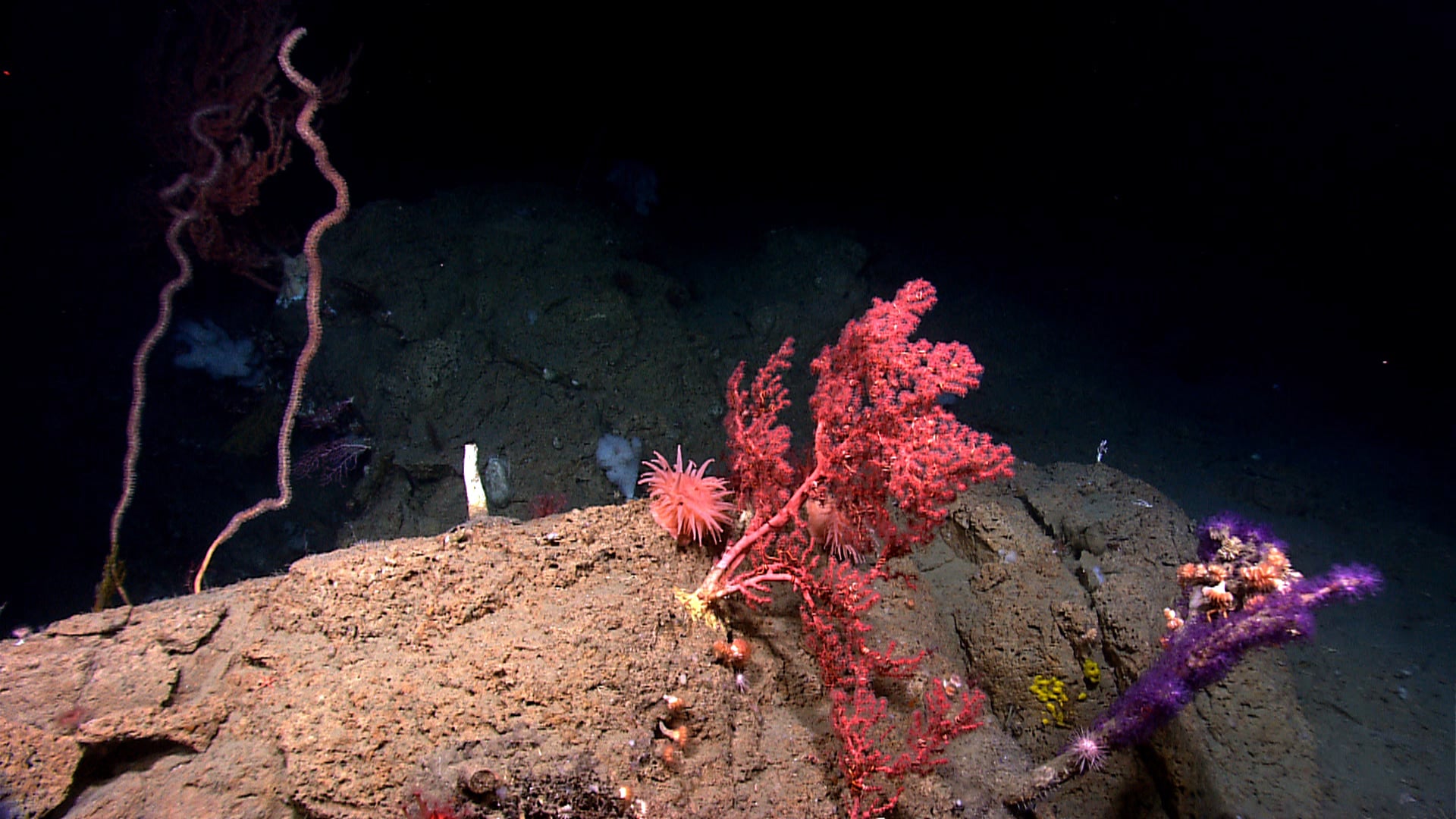19 June 2015 | by Arlo Hemphill
VIRGINIA BEACH. The Mid-Atlantic Regional Council on the Ocean (MARCO) applauds the Mid-Atlantic Fishery Management Council (MAFMC) on their recent approval of an amendment to protect deep sea corals from the impacts of fishing gear in the Mid-Atlantic. If approved by the Secretary of Commerce, the amendment will create “deep sea coral protection zones” in areas where corals have been observed or where they are likely to occur. In total, the areas proposed for designation encompass more than 38,000 square miles – an area nearly the size of Virginia.

Corals clustered with anemones and other deep sea organisms in the deep Mid-Atlantic. Photo: Deepwater Canyons 2013 – Pathways to the Abyss, NOAA-OER/BOEM/USGA
Established by the Governors of the five coastal Mid-Atlantic States in 2009, MARCO is a partnership of Delaware, Maryland, New Jersey, New York and Virginia to enhance the vitality of the region’s ocean ecosystem and economy. MARCO points towards the Council’s decision on deep sea corals as one strongly supportive of both state and regional efforts to sustain the long-term health of the Mid-Atlantic’s ecological and economic ocean resources. Deep sea corals are important as spawning, nursery and feeding habitat for numerous fish and invertebrate species. However, they are slow-growing and fragile, making them vulnerable to damage from certain types of fishing gear that come in contact with the sea floor.

A large colony of bubblegum coral in Norfolk Canyon. Image courtesy of NOAA Okeanos Explorer Program, Our Deepwater Backyard: Exploring Atlantic Canyons and Seamounts.
The importance and value of commercial fisheries that operate in or near areas of deep sea coral habitat were also recognized by the Council. As such, the adopted measures were considered in light of their benefit to corals as well as the associated impact to commercial fisheries.
“We express appreciation not only to MAFMC but also to the commercial fishing community for their sacrifice in helping to protect these ancient corals… our fishermen have an increasingly difficult time making a living on the ocean so this was a truly historic and remarkable action,” said Laura McKay, the Chair of MARCO’s Management Board and Manager of Virginia’s Coastal Zone Management Program who attended the Virginia Beach meeting when the amendment was passed.

A large black coral along the edge of a very steep cliff that was heavily encrusted with coral and sponges. Image courtesy of NOAA Okeanos Explorer Program, Our Deepwater Backyard: Exploring Atlantic Canyons and Seamounts 2014.
Through the 2009 Mid-Atlantic Governors Agreement on Ocean Conservation, the MARCO states agreed to coordinate protection of important habitats and sensitive and unique offshore areas on a regional scale. Last October, MARCO issued a Statement on a Course of Action for the Conservation of Mid-Atlantic Submarine Canyons, geologic features that are closely associated with corals in the Mid-Atlantic. This Course of Action includes consideration of potential mechanisms that strengthen protection of submarine canyon habitats. Through the Deep Sea Corals Amendment, the MAFMC has taken leadership to ensure that corals – the living architects that form structure in canyon habitat – are going to be protected long into the future.
“The fishing community has taken a leadership role towards safeguarding an exceptional resource of the Mid-Atlantic. They are both beneficiaries and champions of deep sea corals in our region,” said Kate Killerlain Morrison, MARCO’s Executive Director, also in attendance.
###
See Also:
- Media Resources: Submarine Canyons
- MARCO News: MARCO Management Board Approves Mid-Atlantic Submarine Canyon Data Analysis Project 16 April 2015
- MARCO News: MARCO Releases Course of Action, Convenes Experts to Discuss Deep Sea Canyon Science 6 October 2014
- MARCO Blog: Okeanos Embarks on Submarine Canyon Exploration
- MARCO Data Portal News: Discovering New Territory and Gathering New Data with Okeanos Explorer
- Our Deepwater Backyard: Exploring Atlantic Canyons and Seamounts 2014

